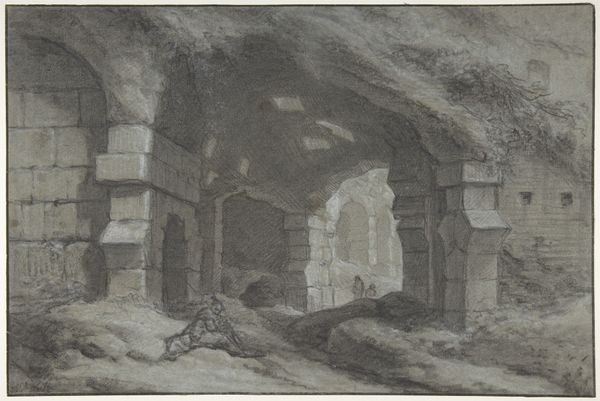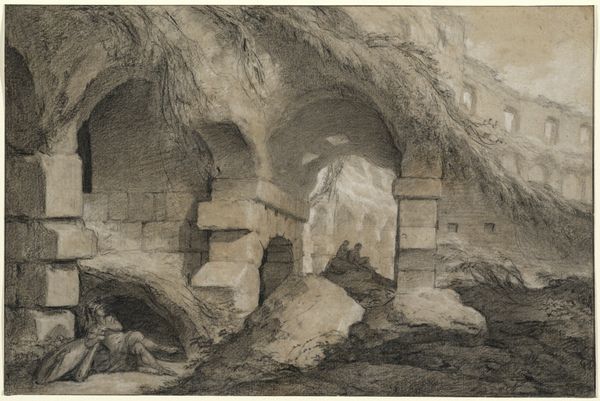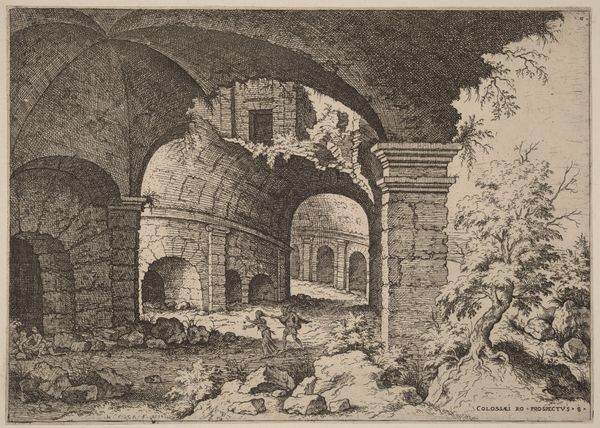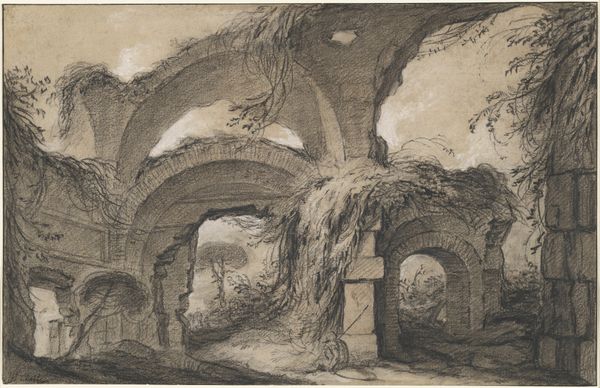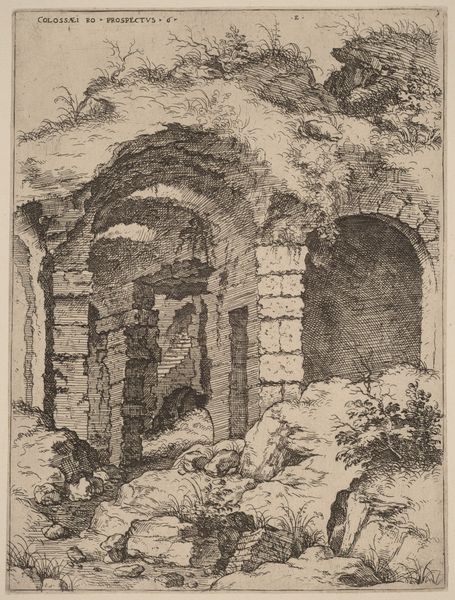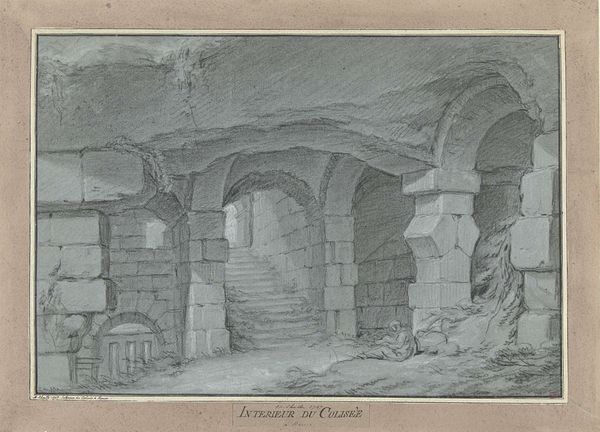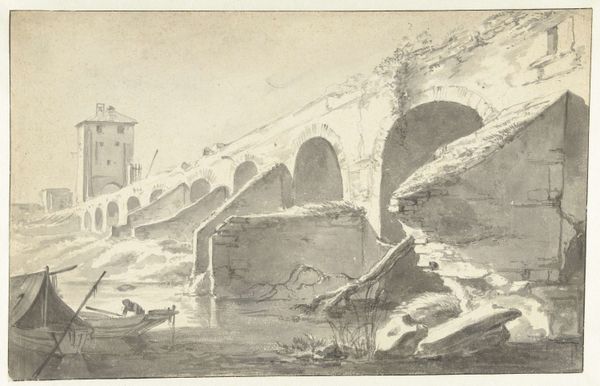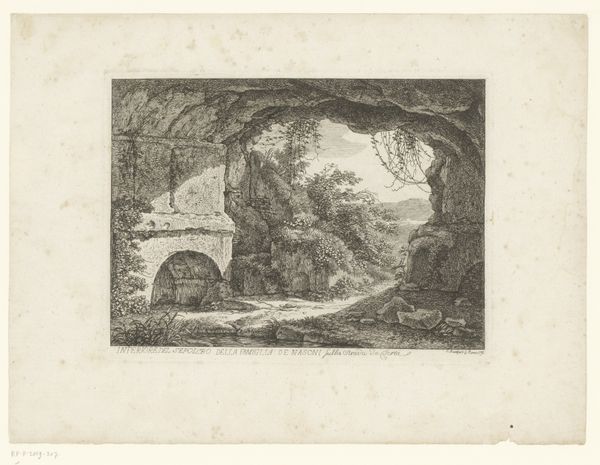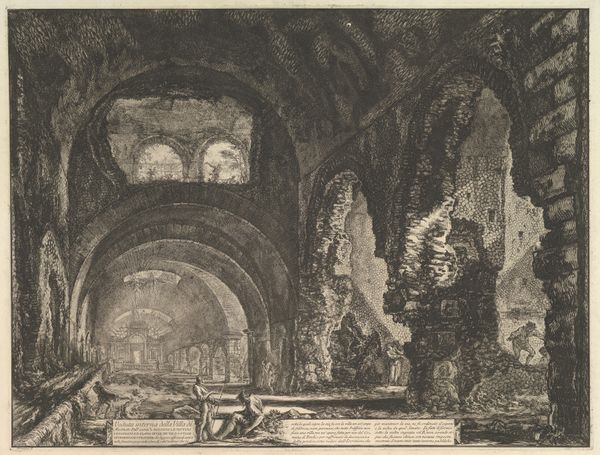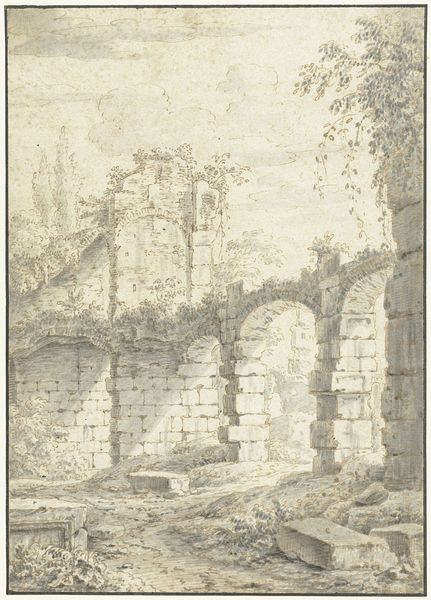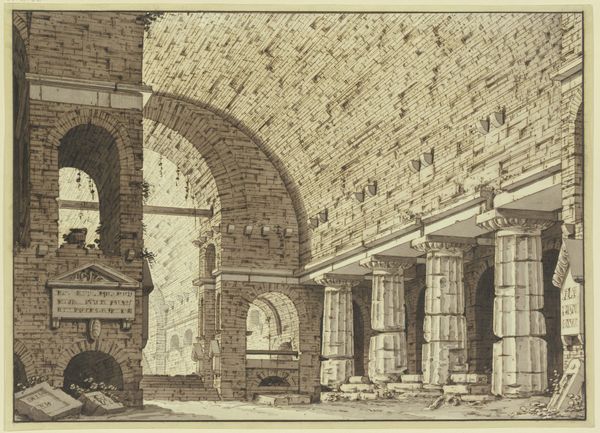
drawing, pencil, charcoal, architecture
#
drawing
#
neoclacissism
#
pencil sketch
#
landscape
#
etching
#
pencil
#
architectural drawing
#
architecture drawing
#
charcoal
#
history-painting
#
architecture
Dimensions: height 296 mm, width 476 mm
Copyright: Rijks Museum: Open Domain
Charles Michel Ange Challe captured the Colosseum in Rome with chalk and pencil. The arch, a dominant feature here, serves as a portal not just in architecture but through time itself. Consider the arch as a symbol: in ancient Rome, it signified triumph and imperial power, as seen in the triumphal arches erected to honor emperors. This motif echoes through the ages, appearing in Renaissance paintings as gateways to divine encounters, and even in modern architecture as symbols of strength and stability. In Challe's depiction, the dilapidated state of the Colosseum introduces a poignant counterpoint. The arch, once a symbol of Roman might, is now overgrown with vegetation. This recalls the vanitas motifs in Dutch Golden Age painting, reminding us of the transience of human achievement. It evokes a sense of melancholy, a meditation on the cyclical nature of history, destruction and rebirth. The archway here is a powerful conduit, engaging our subconscious with themes of memory, decay, and the enduring power of nature.
Comments
rijksmuseum about 2 years ago
⋮
Challe had drawn after antique monuments in Rome while training to be an architect. He drew the Colosseum from many – often original – viewpoints, like this ruined arch, covered in overgrown vegetation. Using a stump, a tightly rolled up cylinder of soft material, he blended the chalk lines to create shadows.
Join the conversation
Join millions of artists and users on Artera today and experience the ultimate creative platform.
